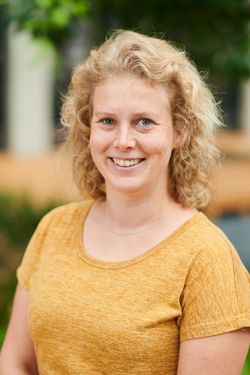
Valérie Daux
Sessions in which Valérie Daux participates
Monday 27 June, 2022
Free, in person and onlineThe stable isotopic compositions of carbon and oxygen (d13C and d18O) measured in tree rings are valuable proxies for reconstructing paleoclimate and are increasingly used as paleophysiological proxies. Applying these proxies in ecophysiology and paleoclimate can be challenging as they rely on complex process-based models and poorly constrained input data. In recent years, h...
Tuesday 28 June, 2022
The current climate warming is unique in terms of its ubiquity and synchrony on a global scale. Over the last millennium, pre-industrial periods with warmer and colder temperatures occurred at different times in different locations around the globe (Neukom et al., 2019). Long-term temperature reconstructions in the Southern Hemisphere remain sparse and not always consistent among them (Lara et al., 2020). Therefore, to understand the temporal and spatial patterns of global-scale temperatur...
Wednesday 29 June, 2022
Rescheduled from June 28th to June 29th
The current climate warming is unique in terms of its ubiquity and synchrony on a global scale. Over the last millennium, pre-industrial periods with warmer and colder temperatures occurred at different times in different locations around the globe (Neukom et al., 2019). Long-term temperature reconstructions in the Southern Hemisphere remain sparse and not always consistent among them (Lara et al., 2020). Therefore, to understand the temporal and spatial patterns of global-scale temperatur...
Thursday 30 June, 2022
In their book chapter in 2011 Gagen et al. (2011) highlighted the need for stable isotope dendroclimatology to move beyond studies that simply demonstrate ‘potential’. This symposium, more than a decade since this publication, will focus on dendrogeochemical studies that demonstrate that the field has moved beyond studies focused on ‘potential’. In particular, this session will strive to identify compelling new insights into unique aspect...
Sessions in which Valérie Daux attends
Tuesday 28 June, 2022
Ring-width (RW) and Blue Intensity (BI) parameters (earlywood - EWB, inverted latewood – LWBinv, and delta - DB) were measured from samples of Araucaria araucana from six sites in northern Patagonia, Argentina. The distance between the most southerly and northerly sites is ca. 130 kms. Despite a much weaker between-tree signal for the BI parameters than RW, principal component analysis identifies a much stronger regional between-site signal for the BI parameters. Split period correlation r...
Wednesday 29 June, 2022
Dendrochronology is considered one the most precise of all the scientific dating techniques. However, it requires long sequences of tree rings and a master record for both the species and region in question. At the University of Groningen, we have been pioneering a new approach to dating that combines the precision of dendrochronology with the versatility of radiocarbon dating. It relies on the detection of spikes in the annual radiocarbon record, thought to b...
Information garnered from historical timbers and wooden artifacts (e.g. houses, barns, ships) can greatly enhance our understanding of human, ecological, and climate history, especially in regions where few old-growth forests and trees remain, tree longevity is relatively short (less than 300-400 years), and environmental conditions break down wood rather quickly, like in mesic to wet regions. Over the last decade plus, the application of tree-ring techniques on wo...
Information garnered from historical timbers and wooden artifacts (e.g. houses, barns, ships) can greatly enhance our understanding of human, ecological, and climate history, especially in regions where few old-growth forests and trees remain, tree longevity is relatively short (less than 300-400 years), and environmental conditions break down wood rather quickly, like in mesic to wet regions Over the last decade plus, the application of tree-ring techniques on woo...
